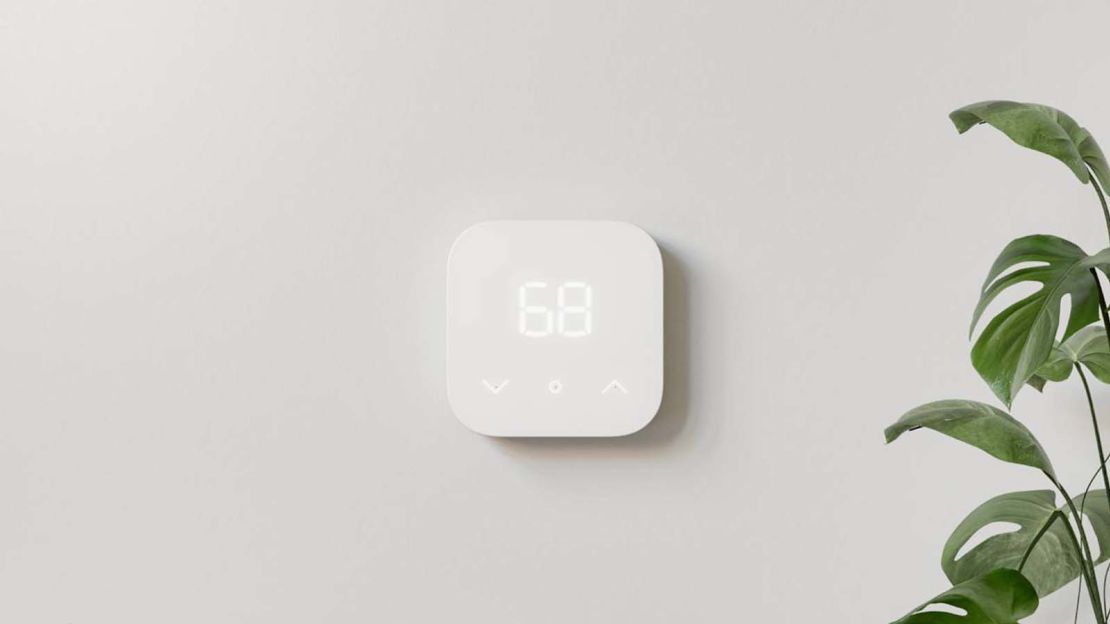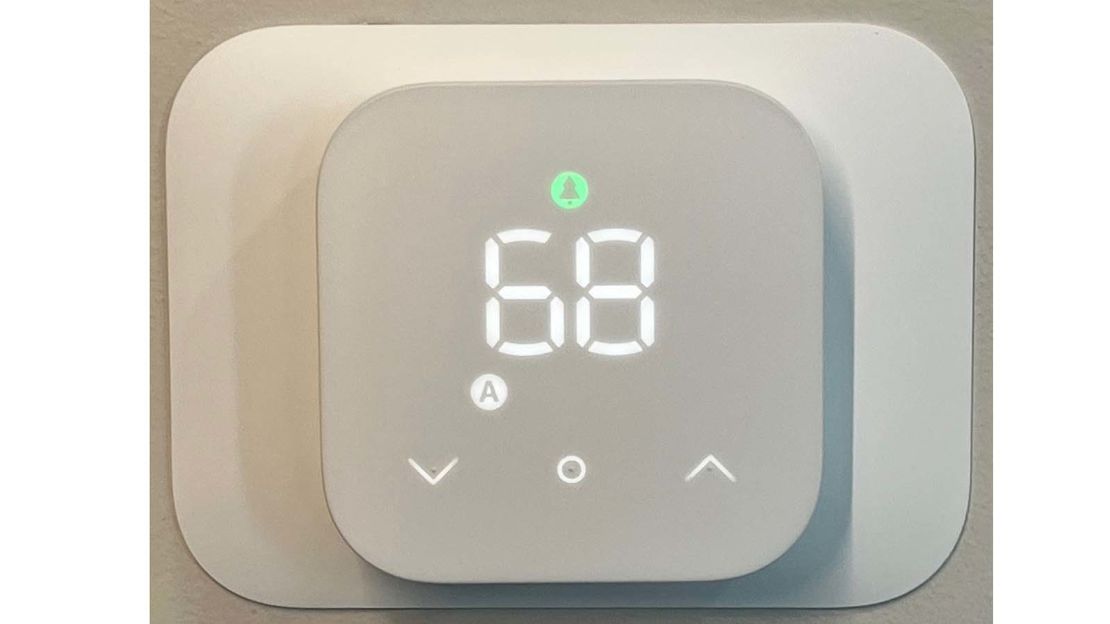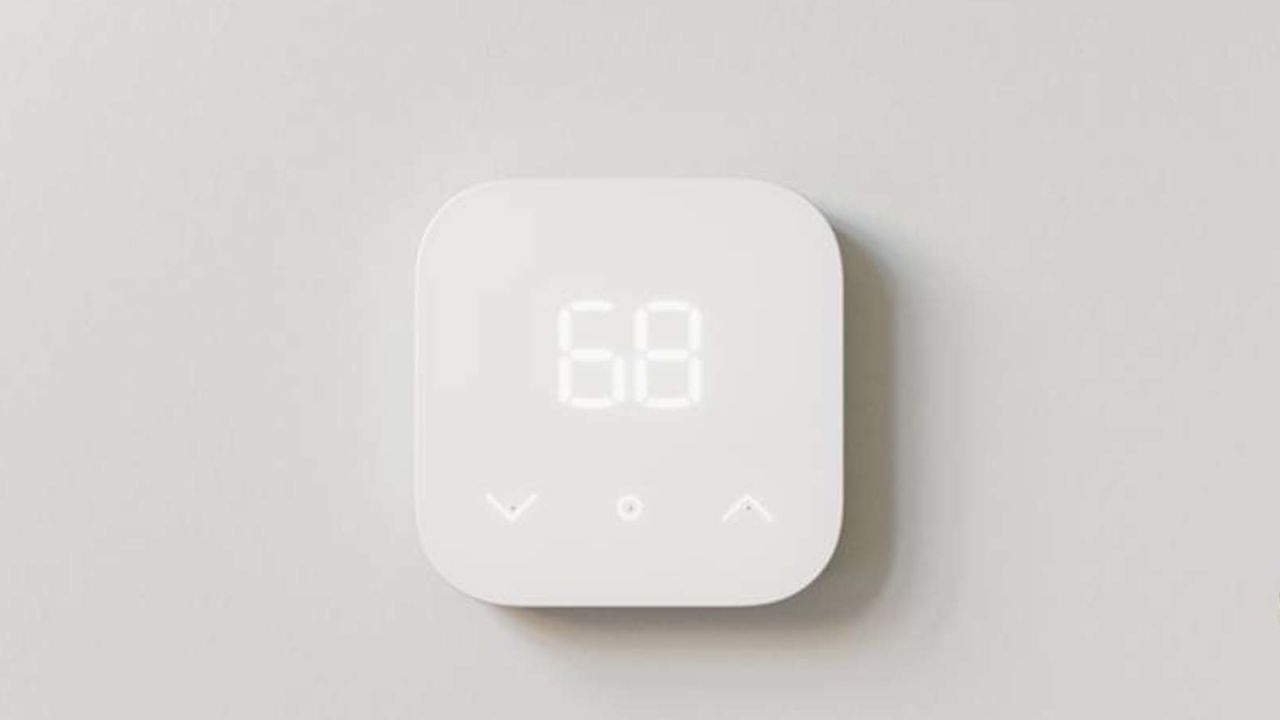The $60 Amazon Smart Thermostat pulls off a feat very few smart home devices can accomplish: It offers all the functionality of even the priciest connected thermostats at the lowest price. Even better, it does so with surprisingly few trade-offs. There is, however, one great big caveat, and its name is Alexa.
Like the market-leading Nest Learning Thermostat, which usually retails for $250, the Amazon Smart Thermostat can learn your habits and routines, then automate your home’s heating and cooling schedule to match. Used effectively, that can translate into energy savings and lower utility bills, all without sacrificing comfort. And yet, Amazon’s thermostat is priced well below even the lowest-cost competitor from a renowned discount brand, the roughly $80 Wyze Thermostat.
I disconnected the third-generation Google Nest I had been relying on to manage my townhouse’s heating and cooling controls for the past four years and replaced it with an Amazon Smart Thermostat, which I’ve been testing for over a month. I can tell you this much: The Nest won’t be going back up. Here’s why.
The who, what and how
Who this is for: The Amazon Smart Thermostat is for anyone looking for a thermostat that can automatically adjust their home’s temperature and who either lives in an Alexa household or is willing to adapt to Amazon’s smart home ecosystem. Though it doesn’t have a speaker or microphone, it can use one or more Alexa speakers to add to its functionality. In fact, the more smart home devices you have in general, the better both Alexa and the Amazon Smart Thermostat will work.
What you need to know: Unlike most gadgets, the less you interact with a smart thermostat, the better. And the Amazon Smart Thermostat might well be the most autonomous thermostat available, requiring less interaction than even the market pacesetter, Nest. It also happens to be the least expensive and is compatible with most 24-volt systems (most modern residential HVAC installations) — though it does require a C-wire (an adapter is available if your home doesn’t have one).
How it compares: At less than a quarter of the cost of the flagship Nest, the Amazon Smart Thermostat falls short in just one category: build quality. Although its clean, minimalist design is perfectly tasteful and its materials seem plenty durable for a wall-mounted gadget, the Nest’s color LCD and mechanical click wheel made of premium metal are undeniably nicer than Amazon’s cream-colored plastic touchscreen and color icons. How much that matters depends on whether you want your thermostat to serve as a conversation piece or just serve your heating and cooling needs. Another simple yet attractive looking thermostat is the Ecobee SmartThermostat, which includes a speaker and microphone that let you directly communicate with Alexa or Apple’s Siri. What it doesn’t have, however, is the same level of access to your behaviors and habits as Google or Amazon, so its automation algorithm has less data to work with.
A simple design with easy installation

Physically, the Alexa Smart Thermostat is a white plastic square about 3 1/2 inches tall and wide and just shy of an inch thick. It comes with a soft touchscreen faceplate illuminated by simple color icons (red for heat, blue for AC) and a digital number display.
Disconnecting your old unit and installing the Amazon Smart Thermostat should be easy-peasy for anyone with even a modicum of mechanical aptitude. As with other thermostat kits, Amazon includes a small screwdriver as well as a faceplate to cover any unsightly scars your previous thermostat may have left on the wall.
Amazon also includes detailed printed materials in the box, but for more in-depth instructions and how-to videos, there’s also an Amazon Smart Thermostat support page. When you’re finished installing it, everything should look clean and tidy — even if you need the C-wire adapter, which installs at your furnace rather than at the thermostat.
If you don’t already have the Alexa mobile app, you’ll need to download it to complete installation, but from there, connecting the thermostat to Alexa is a quick, intuitive process that should only take a few minutes (just tap to add a device and follow the onscreen instructions from there).
By default, Alexa sets the thermostat to “auto,” which will switch on either heating or cooling, depending on what’s needed. The default temperature range is set to heat to 68 degrees Fahrenheit and cool to 75 degrees Fahrenheit, but you can adjust it however you’d like. You can also choose to switch to dedicated heat or cool — or, for that matter, turn the whole thing off — but for maximum set-it-and-forget-it enjoyment, I’d recommend you don’t touch a thing and just let Alexa take charge from there.
The more Alexa gets to know you, the better

The Amazon Smart Thermostat doesn’t work with Google Assistant or Apple HomeKit, which means you’ll have no choice but to cozy up to Alexa. In fact, you’ll need the Alexa mobile app to set up the thermostat and for anything more complicated than adjusting the temperature. The device itself offers only a few basic touchscreen controls using three buttons: up, down and mode (to switch between heating, cooling, auto and off).
Unlike with the Ecobee, you’ll need to add at least one Amazon Echo smart speaker or display to the Smart Thermostat if you want in-home voice control. You can, in a pinch, bark commands at the Alexa app, but it’s not nearly as simple. However, that’s not the only reason you might want to consider adding one or more Alexa devices to your home — the more you use Alexa, the better Alexa gets to know you and your schedule (and the better your thermostat can adjust accordingly).
I happen to have about a dozen Amazon Echo and Echo Show devices strewn about my townhouse and I rely on Alexa for everything from turning my lights off at night to keeping an up-to-date shopping list. I share my location so Alexa knows when I’m home and when I’m away. Alexa even shushes my two dogs when they bark in the house. In other words, Alexa knows me and my household well — my Amazon Echos can even distinguish my elementary-aged daughter’s voice and face from my own. Up next: Why that makes such a difference.
Alexa ‘Hunches’ are the Smart Thermostat’s killer feature
Just a few years ago, Amazon introduced a quirky new feature called Alexa Hunches. At first, enabling Hunches just gave Alexa permission to make suggestions based on your patterns of behavior. If every night around 9 p.m., for example, you usually turn off the front porch light and lock the front door, then one night you lock the door without flipping the light, with Hunches turned on, Alexa might chime in a few minutes later and ask if you’d meant to turn off the porch light (then offer to do it for you).
Sharing your location with the Alexa app on your phone supercharges Alexa Hunches, adding your physical whereabouts to Alexa’s list of available data points. Another power-up is to turn on Automatic Actions, which grants Alexa permission to act on Hunches without having to consult with you first. With Hunches and Automatic Actions enabled, Alexa can adjust all sorts of smart home gadgets, including smart lights, smart locks and — you guessed it — the Amazon Smart Thermostat, all in the background.
If that sounds a little too hands-off to you, just remember that if Alexa doesn’t get it just right, you can always adjust things back the way you want them and Alexa will learn from the interaction and (try to) do better next time.
The perfect temperature with minimal hassle

I live in Kentucky, where the Midwest intersects with Appalachia, so early spring usually means a handful of warm-to-hot days peppering stretches of abysmal cold. Honestly, the whole year can be almost as unpredictable, so I usually keep my thermostat set to a temperature range that triggers heat if it gets too cold and cooling if it gets too hot — which is the trickiest mode for a smart thermostat to get right.
In the four years I spent with a Nest, I had to turn off the heat in the summertime or cancel cooling in the winter at least a few dozen times. Not once, however, during the six or so weeks I spent with the Amazon Smart Thermostat did I have to make such an adjustment.
This was due to Amazon’s default setting — which heats up to 68 degrees and cools down to 75 degrees — and which sets a wider spread than I had on my Nest (68 and 72 degrees, respectively). But here’s the thing — I set my Nest at those temperatures because I constantly felt hot when cooling was set anywhere above 72 degrees. Yet, go figure, I was comfortable all day when the Amazon Smart Thermostat was set to cool to 75 degrees.
In fact, after the initial set-up, I only adjusted the temperature a handful of times. About four or five times in the first two weeks of having the device installed, I turned the AC down to 68 degrees at around 9 p.m. From then on, however, whenever I headed upstairs for bed, my bedroom was the perfect temperature.
This is exactly the kind of thing that makes a smart device feel magical, and the number-one reason the Nest isn’t going back up on my wall. After three or four weeks of using the Amazon Smart Thermostat, I never had to adjust it again.
It’s too soon to tell whether the Amazon Smart Thermostat saved me any money on my utility bill in the last month, but I suspect it will in the long run it will.
Bottom line
The only real drawback to the Amazon Smart Thermostat is its sole compatibility with Alexa, but that only matters if you don’t already or aren’t willing to use Amazon’s digital voice assistant. Otherwise, sure, the Nest may look a lot nicer, but I’ll trade nice form for better function any day of the week.
Besides, the Amazon Smart Thermostat’s form actually emulates its function — the physical device fades into the surrounding decor just like the device’s controls recede from your awareness as it learns to anticipate your heating and cooling needs.
If you’re looking for the best smart thermostat that can learn your habits and automate your HVAC controls, there are really only two options: the Amazon Smart Thermostat, for $60, and the Nest for $250. As long as you don’t mind Alexa, the decision is practically a no-brainer.

















